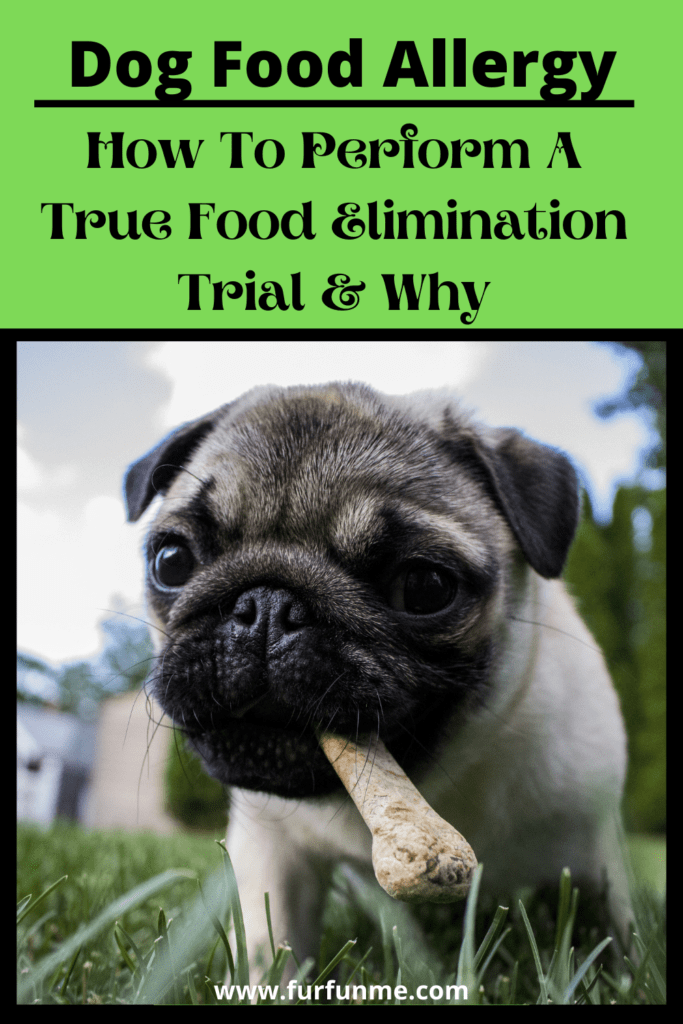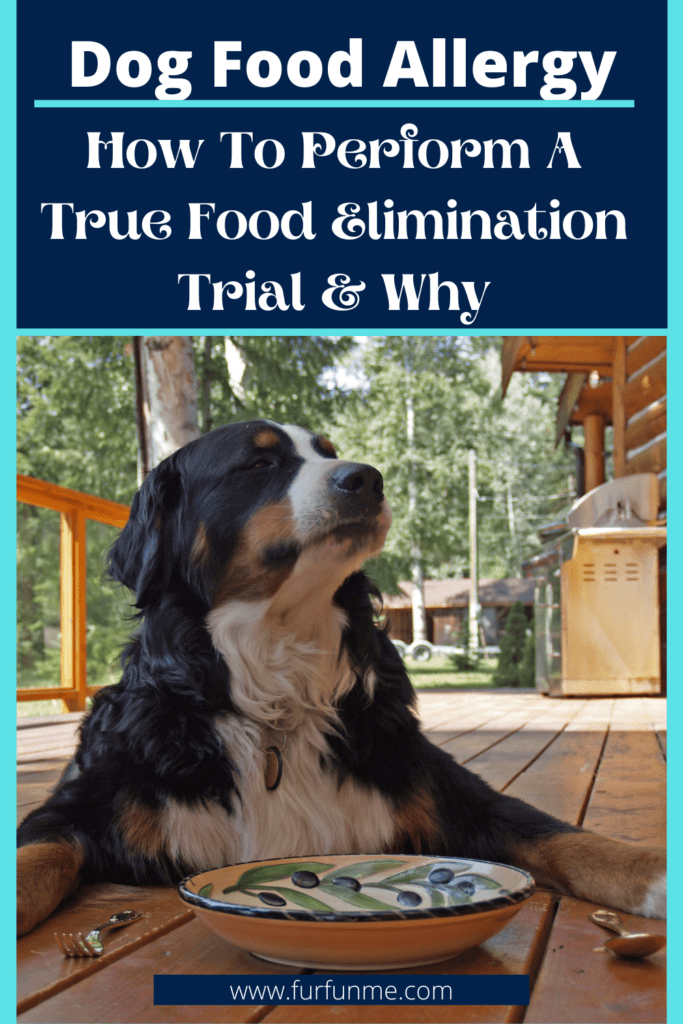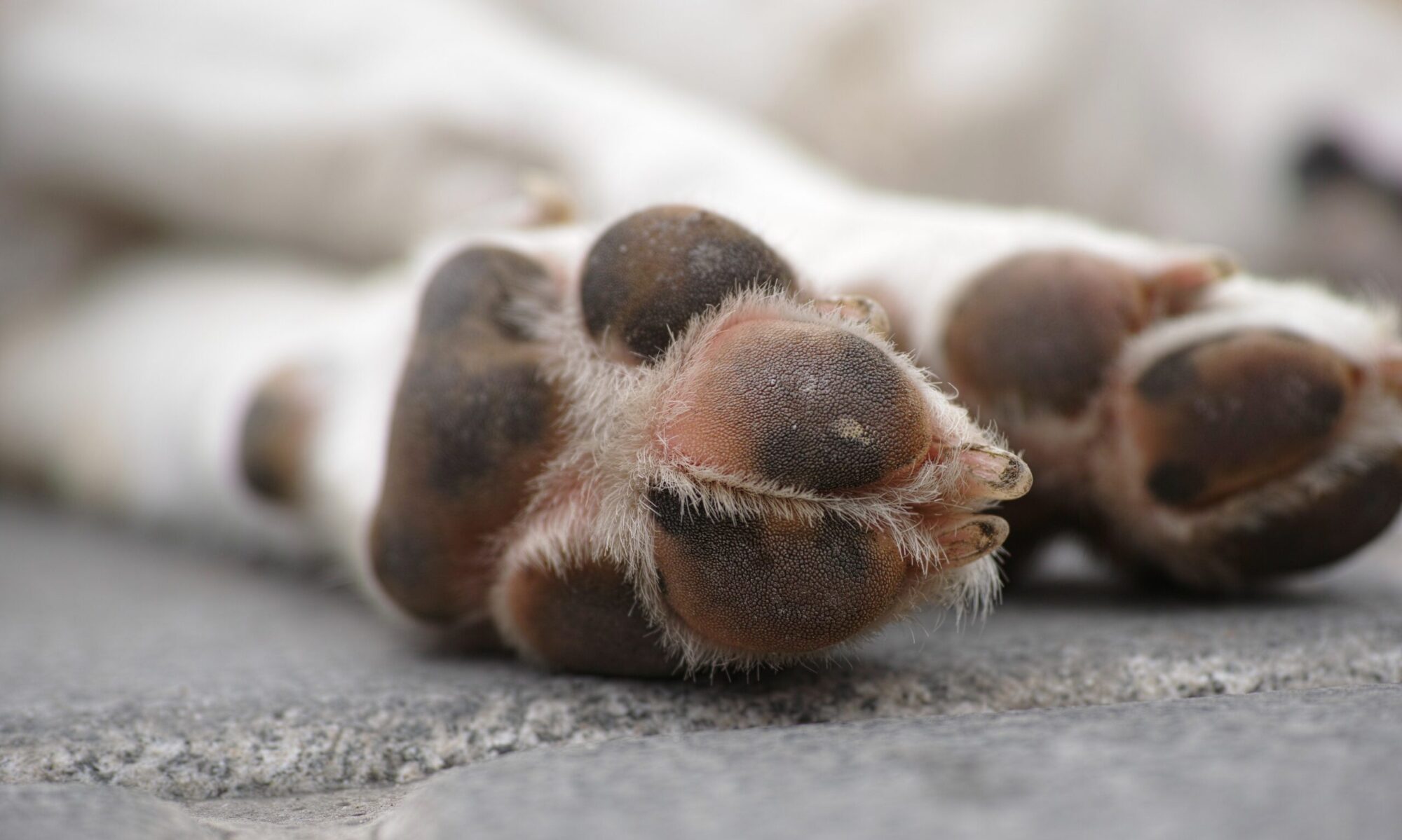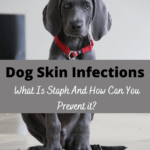
Food allergy In Dogs and Performing Elimination trials.
This is a big one and something I am incredibly passionate about getting right the first time!
So, let us talk about why and how to perform a food elimination trial. Plus let’s bust a few myths along the way.
Well, What Is A Food Elimination Trial?
A food trial involves, placing your dog on a novel protein diet, for a minimum of 6-8 weeks.
A food elimination trial is considered the gold standard method, for diagnosing food allergies, in a dog globally.
Other methods are available, but less reliable and if it were my dog, I would only use the gold standard method.
Any other method used, will be less accurate than performing a food elimination trial. So Let’s do this right the first time.

Why Would You Perform A Food Trial On Your Dog?
Food elimination diet trials are used to determine if a dog has a food allergy.
So what does a food allergy look like in a dog?
Food allergies can present themselves in several different ways. Common symptoms include anal gland problems, gastro issues and regular upset tummy episodes from a young age.
Also common is skin issue like ear infections, itchy irritated feet, skin rashes, and irritated skin around the bum and mouth.
Common Myths About Food Allergies
!Myth Busted!
Food allergies in dogs are less common than environmental allergies.
A dog is more likely to be allergic to something in its environment like pollen or dust mites than it is its food.
!Myth Busted!
Food allergies in dogs are most commonly caused by a meat protein source! Currently Beef is the number 1 food allergen globally.
Grain allergies in dogs are uncommon.
Unfortunately, the human fad of ‘grain-free eating’ means a lot of owners waste time and money trying grain-free dog diets before performing a proper food trial.

How To perform A Food Elimination Trial.
To perform an elimination diet trial on a dog they need to be placed onto a novel protein diet for at least 8 weeks. This needs to be strictly monitored and controlled. It’s best to talk to your vet before starting and keep good communication with them throughout the trial.
What Is A Novel Protein Diet?
A “novel” protein just means a “new” protein a dog hasn’t eaten before.
Normal doggy diets often contain multiple protein sources. Also cross contamination between different foods is common in manufacturing processes. Therefore it is impossible to use these diets for an elimination trial.
It needs to be known that the diet is a novel protein for the dog. Otherwise, time can be wasted or false results determined.
Worse case is that a food allergy goes undiagnosed because it is assumed the diet did not make a difference to the symptoms.
It is considered we have no novel protein sources. With multiple protein sources being mixed in diets, dogs being exposed to wild meats and roadkill commonly. Placing them on a single ‘uncommon’ protein. Is not 100% guaranteed. This can lead to the mentioned above comments about wasted time and failed results.
So What Diet Is Recommended To Perform A Food Trial With?
Talking to a vet about the right diet in a country or area is advised before starting or attempting a food elimination diet trial.
In my experience, we successfully use what’s known as hydrolyzed diets. Royal Canin has done amazing work creating Annallergenic and Hypoallergenic therapeutic diets.
Annallergenic is considered the gold standard globally for a food elimination trial.
I have included a link to a more detailed video on the diet.
Anallergenic – How it’s made! Video: https://youtu.be/z13QamO44yg

Keep your pet strictly on the diet chosen.
This can’t be emphasized more! It is very easy to fail a trial. The owner must be 100% committed to the diet trial and understand fully what they are trying to achieve. Owner compliance is of the utmost importance.
Why? because if exposed to a protein source before the 8 weeks is up, it is impossible to determine if the dog is reacting to that protein source or others still left in the dog’s system. Or none at all. Meaning the trial needs to be re-started from the beginning. This can be incredibly frustrating for everyone involved.
Before starting a food trial make sure the dog owners are aware and committed. It only takes a very small amount of bread, cheese, meat, milk, and other dog treats or foods to ruin the trial.
A food trial is temporary, Once an allergy or non-allergy is confirmed then the dog’s diet can vary again. Either back to previous if no food allergy was found or if an allergy was confirmed a less restricted version only avoiding that protein source.
What Happens When The 6-8 Weeks Of Novel Protein Diet Is Completed
My favorite part the challenge!!
It is time to find out if the dog has a food allergy.
There are typically two ways to do this that I know of but again check with you’re vet and what they recommend.
1. A food holiday – this means giving your pet everything they haven’t had during the food trial and seeing if they have a reaction. It’s a very quick way to determine if food is their issue.
The downside of a food holiday challenge is if the dog has a reaction, it is not known exactly which protein source caused it. The reaction then needs to be re-controlled with the novel protein diet and individual testing will be required.
2. Trial individual food allergens/Protein gradually. To then determine what exactly caused the flare.
In this method, one by one different protein sources/types is trialed over 2 week periods. If the dog has a reaction then an allergy is confirmed to that protein source.
If no allergen is found, then food allergy has been ruled.
Fun Fact
Ear disease/flares are considered skin disease they are under the ‘Skin Umbrella’ and are a common flare from food allergies
In Conclusion
If your pet has suffered from ongoing skin/gastro issues, talk to your vet about performing a food elimination trial.
Food elimination trials are used for diagnosing food allergies in pets.
They require a novel protein diet for 6-8 weeks
You Must then challenge the diet to confirm food allergy in your pet.
Remember to always involve your vet when considering a food elimination trial.
As always thanks for reading = )
Check out my other content while you’re here
- Dog Skin Staph Infection Information And Tips
 Facebook0Pin0 What is staph? what do you do about it? and better how can you prevent it in the future. See my dog skin staph infection tips in this post You’ve been to the vet or suspect your dog has a skin infection. Staph infection is likely, but can’t be confirmed without cytology by your …
Facebook0Pin0 What is staph? what do you do about it? and better how can you prevent it in the future. See my dog skin staph infection tips in this post You’ve been to the vet or suspect your dog has a skin infection. Staph infection is likely, but can’t be confirmed without cytology by your …Continue reading “Dog Skin Staph Infection Information And Tips”
- Dog Skin Lumps 3 Types That Are Benign – Not Cancer.
 Facebook0Pin0 Following my post on dog skin cancers, I decided it would be nice to link and point out that not all dog skin lumps are cancer. Some lumps are benign and less harmful than a skin cancer. Different Types Of Benign Lumps Lipoma Lipomas are formed from excess fatty tissues. These dog skin lumps …
Facebook0Pin0 Following my post on dog skin cancers, I decided it would be nice to link and point out that not all dog skin lumps are cancer. Some lumps are benign and less harmful than a skin cancer. Different Types Of Benign Lumps Lipoma Lipomas are formed from excess fatty tissues. These dog skin lumps …Continue reading “Dog Skin Lumps 3 Types That Are Benign – Not Cancer.”
- Dog Skin Cancer – The Different Types And How Serious Are They?
 Facebook0Pin0 Dog skin cancer – First of all, if you are worried your dog might have skin cancer, please make an appointment with your vet to get it checked. Cancer is not something you want to sit around on. Cancer is one of the leading causes of death in dogs over 10 years old. However, …
Facebook0Pin0 Dog skin cancer – First of all, if you are worried your dog might have skin cancer, please make an appointment with your vet to get it checked. Cancer is not something you want to sit around on. Cancer is one of the leading causes of death in dogs over 10 years old. However, …Continue reading “Dog Skin Cancer – The Different Types And How Serious Are They?”
- Dog Skin Conditions – 5 Serious Skin Problems Your Dog Can Have.
 Facebook0Pin0 Dog skin conditions, there are so many skin disease’s that this post could cover but it would have been very long. So I decided to pick 5 that I felt where important and also potentially more common than others. This list is based on my knowledge and experience from working in a special interest …
Facebook0Pin0 Dog skin conditions, there are so many skin disease’s that this post could cover but it would have been very long. So I decided to pick 5 that I felt where important and also potentially more common than others. This list is based on my knowledge and experience from working in a special interest …Continue reading “Dog Skin Conditions – 5 Serious Skin Problems Your Dog Can Have.”
- Tips To Manage A Dog With Skin Problems.
 Facebook0Pin0 So you have a dog with skin problems? whether its chronic, seasonal, or random.I have 5 tips on how you can better manage your dog with skin problems. Dog with skin problems? 5 tips to manage it long term. #1 – Wash Them Less. That’s right washing less is better especially a dog with …
Facebook0Pin0 So you have a dog with skin problems? whether its chronic, seasonal, or random.I have 5 tips on how you can better manage your dog with skin problems. Dog with skin problems? 5 tips to manage it long term. #1 – Wash Them Less. That’s right washing less is better especially a dog with …
What is the most common food allergy in dogs?
How can you tell if your dog is allergic to food?
Performing a true food elimination trial is the gold standard way to tell if your dog has a food allergy.
What do you feed a dog with food allergies?
Once you know what your dog is allergic to you then just avoid those protein sources your dog is allergic to.
How long does it take for food allergies to go away in dogs?
It can take 3 weeks for a flare to settle and sometimes up to 8-12 weeks for symptoms to clear completely.
Does grain free dog food help with allergies?
Your dog is more likely to be allergic to a meat protein source or even the environment than grains.
A novel protein diet must be used to determine if a dog has a food allergy.





